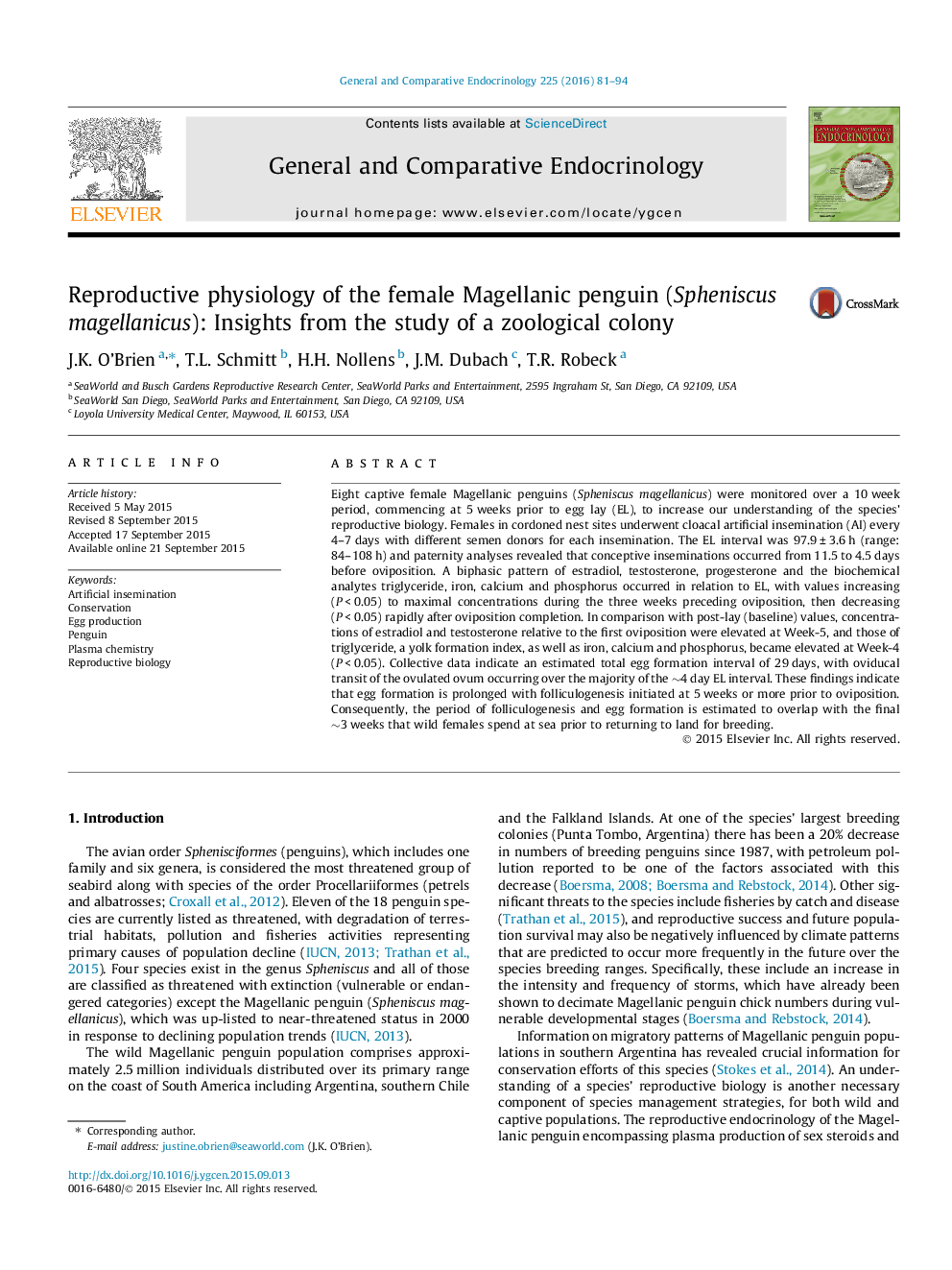| کد مقاله | کد نشریه | سال انتشار | مقاله انگلیسی | نسخه تمام متن |
|---|---|---|---|---|
| 2799880 | 1568881 | 2016 | 14 صفحه PDF | دانلود رایگان |

• Female reproductive biology was characterized in Spheniscus magellanicus.
• Data indicate a 29 day egg formation interval and a ∼4 day egg lay interval.
• The ovulated ovum spends the majority of the ∼4 day egg lay interval in the oviduct.
• Folliculogenesis and yolk formation are initiated while wild female penguins are at sea.
Eight captive female Magellanic penguins (Spheniscus magellanicus) were monitored over a 10 week period, commencing at 5 weeks prior to egg lay (EL), to increase our understanding of the species’ reproductive biology. Females in cordoned nest sites underwent cloacal artificial insemination (AI) every 4–7 days with different semen donors for each insemination. The EL interval was 97.9 ± 3.6 h (range: 84–108 h) and paternity analyses revealed that conceptive inseminations occurred from 11.5 to 4.5 days before oviposition. A biphasic pattern of estradiol, testosterone, progesterone and the biochemical analytes triglyceride, iron, calcium and phosphorus occurred in relation to EL, with values increasing (P < 0.05) to maximal concentrations during the three weeks preceding oviposition, then decreasing (P < 0.05) rapidly after oviposition completion. In comparison with post-lay (baseline) values, concentrations of estradiol and testosterone relative to the first oviposition were elevated at Week-5, and those of triglyceride, a yolk formation index, as well as iron, calcium and phosphorus, became elevated at Week-4 (P < 0.05). Collective data indicate an estimated total egg formation interval of 29 days, with oviducal transit of the ovulated ovum occurring over the majority of the ∼4 day EL interval. These findings indicate that egg formation is prolonged with folliculogenesis initiated at 5 weeks or more prior to oviposition. Consequently, the period of folliculogenesis and egg formation is estimated to overlap with the final ∼3 weeks that wild females spend at sea prior to returning to land for breeding.
Journal: General and Comparative Endocrinology - Volume 225, 1 January 2016, Pages 81–94